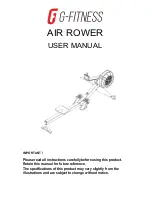
The OTS60AF/2, OTS80AF/2 and OTS100AF/2 are transportable, easy to operate, oil test sets. A
voltage selector fitted on the mains supply input panel at the rear permits the test sets to be operated
from either 110 V, 120 V, 220 V or 240 V 50 Hz/60 Hz mains power supplies. The casing is made of
sheet steel and carrying handles are fitted at each side. The whole construction is very robust.
Incorporated within the casing is the test chamber of moulded plastic construction with a hinged
polycarbonate cover. Protruding into the chamber from its floor are two horns; through these pass the
high voltage transformer output connections, to cradle terminals one at the top of each horn. The test
vessel containing the sample of oil to be tested, is placed on these cradle terminals.
Within the test vessel are mounted two electrodes. The shape of the electrodes and the gap set between
them is determined by the particular national oil testing specification to be used. The vessel itself is of
cast resin construction made in two parts. The electrodes are automatically connected to the cradle
terminals when the vessel is placed on the horns.
Inset into the top rear panel of the test chamber is a supply socket. This provides an independent power
supply for the optional ASTM D1816 American test vessel which has an impeller type oil stirrer. Oil
stirring may also be achieved by a magnetic stirrer bar driven by a rotating magnetic field generated from
beneath the test chamber. This magnetic field is only generated when required, under software control.
The hinged cover to the test chamber is fastened by a trapped key interlock switch. This is a safety
feature whereby high voltage cannot be applied to the test chamber unless the interlock is closed.
Should the interlock be released during an oil testing sequence, the high voltage will be automatically cut
off and the test aborted; the display will indicate that this has occurred. However, the mains supply will
still be applied and the On/Off switch will still illuminate.
Note:-
User settable parameters and test results are stored in non-volatile memory (referred to as
NOVRAM) and are unaffected by the operation of the test chamber interlock or by power
failures.
The control panel is to the right of the test chamber. Once the testing specification has been selected
and a test initiated (via the control panel) the operator is free to do other work while the test sequence is
automatically carried out.
Below the control panel an integral printer is fitted so that a permanent record of any test results may be
obtained. A 9 Way ‘D’ type plug is fitted to the test set to enable an external printer to be connected if
required.
Control Panel
Test circuitry is controlled by a microprocessor and all the inherent benefits of pre-programmed tests,
menu selection of function and memory storage of test results are available.
Panel controls are:
(i) An On/Off power supply rocker switch which illuminates in the ‘On’ position.
(ii) Three tactile keys for making menu selections and generally controlling the test sequences.
(iii) A tactile key for advancing the paper through the internal printer.
The display is a liquid crystal dot-matrix type giving full information in alpha-numeric form. The display
shows the tests which are available, allocates names to the tactile control keys according to the
programme adopted, shows the voltage being applied during a test and reviews the individual test
breakdown voltage results when a test sequence is concluded (plus showing the average breakdown
voltage and standard deviation).
An L.ED. on the control panel illuminates to indicate that a high voltage is being applied to the test
electrodes.
The menus, and their information shown on the display are straightforward and simple to follow. The text
of the operating section of this instruction book gives detailed information which, after the set has been
used once, will probably only need to be referred to if difficulties arise, but please ensure you read
thesection entitled WARNINGS on page 9.
4
General Description
Summary of Contents for OTS 60AF/2
Page 51: ...Cette page est intentionnellment vierge 51...
Page 74: ...Diese Siete wurde absichtlich unedruckt gelassen 74...
Page 97: ...Esta p gine se deja en blanco a prop sito 97...
Page 101: ...101...
Page 102: ...102 Operation...
Page 103: ...103...





































